Exploring Traditional Chinese Food: Recipes and Dishes
Chinese food is a vibrant tapestry of flavors, textures, and techniques that have evolved over thousands of years. From the aromatic spices of Sichuan cuisine to the delicate flavors of Cantonese dishes, exploring traditional Chinese food can be a delightful journey for your taste buds. Here, you can find some of the most iconic recipes and dishes that define this rich culinary tradition.
Staple Ingredients in Chinese Cuisine
To truly appreciate Chinese cooking, it’s essential to understand the staple ingredients that play a crucial role in most dishes. Here’s a list of common ingredients:
- Rice: A staple food, often served with almost every meal.
- Noodles: Available in various forms, including wheat, rice, and egg noodles.
- Tofu: A versatile protein source that absorbs flavors well.
- Soy Sauce: Used for seasoning and marinating, adding umami flavor.
- Ginger and Garlic: Essential for creating aromatic bases for many dishes.
- Vegetables: Including bok choy, snow peas, and scallions, which add freshness and color.
Iconic Chinese Dishes
Each region in China offers its unique culinary delights, but some dishes have gained worldwide popularity. Here are a few classic dishes you should know about:
| Dish | Description | Key Ingredients |
|---|---|---|
| Peking Duck | A famous dish from Beijing, known for its crispy skin and tender meat. | Duck, hoisin sauce, pancakes, and scallions. |
| Kung Pao Chicken | A spicy stir-fry dish featuring chicken, peanuts, and vegetables. | Chicken, peanuts, bell peppers, and soy sauce. |
| Sweet and Sour Pork | A dish known for its balance of savory and tangy flavors. | Pork, pineapple, bell peppers, and vinegar. |
| Mapo Tofu | A spicy dish made with tofu and minced meat, originated from Sichuan. | Tofu, ground pork, chili paste, and Sichuan peppercorns. |
Delicious Recipes to Try
Now that you’re familiar with some signature dishes, why not try making them at home? Below are quick recipes for you to explore:
Peking Duck Recipe
Ingredients:
- 1 whole duck
- Salt
- Hoisin sauce
- Chinese pancakes
- Scallions
Instructions:
- Rub the duck with salt inside and out. Hang it to dry for a few hours.
- Roast in an oven at 375°F for about 1.5 hours until the skin is crispy.
- Serve the duck sliced with hoisin sauce, pancakes, and scallions.
Mapo Tofu Recipe
Ingredients:
- 1 block of firm tofu
- 200g ground pork
- 2 tbsp chili bean paste
- 1 tsp Sichuan peppercorns
- Spring onions (for garnish)
Instructions:
- Stir-fry the ground pork in a hot pan until browned.
- Add the chili bean paste and Sichuan peppercorns, cooking for another minute.
- Carefully add cubed tofu and simmer for 10 minutes.
- Garnish with chopped spring onions before serving.
Local Resources for Ingredients
If you’re looking for authentic ingredients to enhance your cooking, local Asian markets are a great option. Additionally, you can find a variety of online stores like Asian Food Grocer and Wing Hop Fung that offer a wide selection of ingredients for traditional Chinese cooking.
Exploring traditional Chinese food is not just about cooking; it’s about understanding a culture rich in history and flavor. By trying these recipes and dishes, you’ll not only satisfy your hunger but also engage in a culinary adventure that connects you to a part of the world renowned for its food.
The Role of Spices and Sauces in Chinese Cuisine
In the vibrant world of Chinese cuisine, spices and sauces play a crucial role. They are the heart and soul that give each dish its unique character and flavor profile. Whether you are indulging in a bowl of noodle soup or savoring a plate of stir-fried vegetables, understanding the significance of these culinary elements is essential.
Chinese food embraces a varied range of spices, each contributing distinct notes to meals. Some of the most common spices include:
- Sichuan Peppercorns: Known for their unique numbing and citrus-like flavor, these peppercorns create a thrilling taste experience.
- Star Anise: With its sweet and aromatic flavor, star anise is often used in braises and stews.
- Ginger: Fresh ginger adds warmth and depth to many dishes, from teas to main courses.
- Garlic: A staple in Chinese cooking, garlic enhances savory dishes with its pungent and robust flavor.
- Five Spice Powder: A blend of cinnamon, star anise, cloves, Sichuan peppercorns, and fennel seeds, this mix is a key ingredient in marinades.
The way spices are utilized in Chinese cooking is often reflective of regional variations. For instance, Sichuan cuisine harnesses the heat of chili peppers along with the distinctive flavor of Sichuan peppercorns, leading to a signature taste known as “mala,” which translates to “numbing and spicy.” In contrast, Cantonese cuisine often uses milder flavors, focusing on freshness and umami.
Beyond spices, sauces are pivotal in Chinese food. They lend moisture and rich flavor to dishes, elevating even the simplest ingredients. Here are a few indispensable sauces in Chinese cooking:
- Soy Sauce: A cornerstone of Chinese cuisine, soy sauce adds saltiness and depth. Light soy sauce is common for seasoning, while dark soy sauce, richer in flavor, is used for color.
- Oyster Sauce: Made from oyster extracts, this sauce is slightly sweet and offers a savory hint. It’s often used in stir-fries and glazing vegetables.
- Hoisin Sauce: Sweet and tangy, hoisin is a staple for marinades and glazes, enhancing dishes with its complex flavor.
- Rice Vinegar: Commonly used in dressings and dipping sauces, rice vinegar is milder and slightly sweet compared to Western vinegars.
- Szechuan Sauce: Known for its bold, spicy kick, Szechuan sauce typically features garlic, ginger, soy sauce, and chili paste.
Let’s explore how these spices and sauces converge to create the famous dishes of Chinese cuisine. Stir-fried noodles, for example, often feature a blend of soy sauce, oyster sauce, and a pinch of five spice powder, resulting in a balanced and savory flavor. In contrast, a braised meat like red-cooked pork utilizes soy sauce, sugar, and star anise to bring out a deliciously sweet and salty flavor.
To appreciate the full spectrum of flavor in Chinese dishes, consider trying some popular recipes at home:
| Dish | Main Ingredients | Key Sauce/Spices |
|---|---|---|
| Kung Pao Chicken | Chicken, Peanuts, Vegetables | Soy sauce, Sichuan peppercorns, chili paste |
| Beef and Broccoli | Beef, Broccoli, Carrots | Oyster sauce, garlic, ginger |
| Mapo Tofu | Tofu, Ground Pork, Spices | Szechuan sauce, garlic, ginger |
| Sweet and Sour Pork | Pork, Bell Peppers, Pineapple | Hoisin sauce, rice vinegar, sugar |
Cooking Chinese dishes involves a dance of flavors. As you experiment with these spices and sauces, you’re not just blending ingredients; you’re weaving together stories and traditions that span thousands of years. Each recipe is an invitation to explore the rich cultural tapestry that is Chinese cuisine.
For more in-depth recipes and insights into Chinese cooking, visit Chinese Food and explore the full array of spices and dishes available.
Regional Differences in Chinese Food: A Culinary Journey
Chinese cuisine is a vibrant tapestry of flavors, techniques, and local ingredients, shaped by the country’s diverse regions and cultures. Each area boasts its own culinary specialties, making the exploration of Chinese food a delightful journey through varying tastes and dishes. From the spicy dishes of Sichuan to the delicate flavors of Cantonese cuisine, understanding regional differences can enhance your cooking and dining experiences.
The vast landscape of China consists of several distinct culinary regions. Here are the major ones:
- Sichuan: Known for its bold flavors and spiciness, Sichuan dishes often incorporate ingredients like Sichuan peppercorn, which provides a numbing heat. Popular dishes include Kung Pao Chicken and Mapo Tofu. To explore more about Sichuan cuisine, check out China Daily.
- Cantonese: Characterized by its emphasis on freshness and taste, Cantonese cuisine utilizes steaming and stir-frying techniques. Dim sum, known for its small, shareable dishes, is a culinary highlight here. Learn more about this exciting cuisine from China Highlights.
- Shandong: This region emphasizes simple, hearty dishes that showcase the natural flavors of the ingredients. Seafood is prominent, with dishes like Sweet and Sour Carp and Dezhou Braised Chicken being popular choices.
- Huaiyang: Huaiyang food focuses on craftsmanship and presentation. With a balance of flavors, dishes are often beautifully plated. Famous for its delicate soups and pastries, this cuisine often incorporates ingredients like river fish and seasonal vegetables.
- Hunan: Known for its hot and spicy dishes, Hunan cuisine uses a variety of chili peppers and garlic. Signature dishes include Chairman Mao’s Red Braised Pork and Spicy Steamed Fish. For a deeper dive, view the informative listings on China Highlights.
- Yunnan: Featuring an abundance of mushrooms and fresh herbs, Yunnan cuisine presents a unique taste profile. Dishes like Crossing Bridge Rice Noodles stand out for their aromatic flavors.
- Northeast Chinese: Known for hearty meals that are filling and comforting, this cuisine features dumplings, stews, and roast meats. Jiaozi, or Chinese dumplings, is a staple that you must not miss.
When exploring regional cuisines, it’s helpful to consider some common dishes you might encounter:
| Region | Signature Dishes |
|---|---|
| Sichuan | Kung Pao Chicken, Mapo Tofu, Hot Pot |
| Cantonese | Dim Sum, Char Siu, Steamed Fish |
| Shandong | Sweet and Sour Carp, Dezhou Braised Chicken |
| Huaiyang | Yangzhou Fried Rice, Huaiyang Soup |
| Hunan | Chairman Mao’s Red Braised Pork, Spicy Steamed Fish |
| Yunnan | Crossing Bridge Rice Noodles, Mushroom Hot Pot |
| Northeast Chinese | Jiaozi (Dumplings), Guo Bao Rou |
Many regional dishes come with their own unique ingredients and cooking methods. When attempting to replicate these flavors at home, be keen to source local Asian markets or specialty suppliers that can provide authentic ingredients. This will allow you to capture the essence of each cuisine more effectively.
Another fascinating aspect of regional differences in Chinese food is the cooking methods that vary from region to region. For instance:
- Stir-frying: Common in Cantonese cooking, this method preserves the freshness of ingredients.
- Steaming: Frequently used in both Cantonese and Huaiyang cuisines, steaming maintains the natural flavors and nutrients of the food.
- Slow cooking: Predominant in Northeast Chinese cooking, this method enhances the richness of the flavors.
- Spicy and roasting: Key to Sichuan and Hunan cuisines, these techniques provide bold and unforgettable flavor profiles.
Immersing yourself in the rich tapestry of regional Chinese food can significantly enhance your culinary repertoire. Understanding and experimenting with recipes from different regions allows you to appreciate the diverse influences within Chinese cuisine fully. Savor these experiences and enjoy the culinary adventure that awaits within Chinese dishes!
Easy-to-Make Chinese Recipes for Beginners
Chinese cooking can be a delightful experience for anyone, especially those who enjoy vibrant flavors and fresh ingredients. This cuisine offers a variety of dishes that are easy to prepare and perfect for beginners. Let’s explore some easy-to-make Chinese recipes that will have you impressing friends and family in no time!
Essential Ingredients for Chinese Cooking
Before diving into the recipes, familiarize yourself with some essential ingredients commonly used in Chinese cuisine:
- Soy Sauce: A staple for seasoning and marinating.
- Rice Vinegar: Adds acidity and depth to dishes.
- Sesame Oil: Provides a unique, nutty flavor.
- Ginger and Garlic: Key aromatics that enhance flavors.
- Green Onions: Used as a garnish and ingredient for freshness.
Easy Chinese Dishes for Beginners
Vegetable Stir-Fry
This quick and colorful dish is perfect for those who want to eat healthy. Here’s how to prepare it:
- Ingredients:
- 2 cups mixed vegetables (bell peppers, broccoli, carrots)
- 2 tablespoons soy sauce
- 1 tablespoon sesame oil
- 1 clove garlic, minced
- 1 teaspoon ginger, grated
- Instructions:
- Heat sesame oil in a pan over medium heat.
- Add garlic and ginger, stir until fragrant.
- Add mixed vegetables and stir-fry for about 5-7 minutes.
- Pour soy sauce over the veggies and cook for another minute.
- Serve hot over rice or noodles.
Fried Rice
A classic that is both filling and customizable! Follow this simple recipe:
- Ingredients:
- 2 cups cooked rice (preferably day-old)
- 1 cup mixed vegetables (peas, carrots, corn)
- 2 eggs, beaten
- 3 tablespoons soy sauce
- 1 tablespoon vegetable oil
- Green onions for garnish
- Instructions:
- Heat vegetable oil in a pan over medium heat.
- Add the beaten eggs and scramble until fully cooked.
- Add the mixed vegetables and stir-fry for 3 minutes.
- Add the cooked rice and soy sauce, mixing thoroughly.
- Cook for another 5 minutes and serve with green onions on top.
Sweet and Sour Chicken
This dish is a favorite among many and very simple to make:
- Ingredients:
- 1 pound chicken breast, cut into bite-sized pieces
- 1 cup bell peppers, chopped
- 1 cup pineapple chunks
- 2 tablespoons soy sauce
- 1/2 cup sweet and sour sauce
- 1 tablespoon oil for cooking
- Instructions:
- Heat oil in a pan and add chicken pieces, cooking until browned.
- Add bell peppers and pineapple, stir-frying for about 3 minutes.
- Pour sweet and sour sauce and soy sauce over the mix, cooking for an additional 5 minutes.
- Serve with rice or on its own!
Helpful Resources
If you’re keen to learn more about Chinese food and its recipes, consider checking out some valuable resources:
- China Sichuan Food – A comprehensive source for Sichuan dishes and more.
- The Spruce Eats – Offers a variety of recipes including easy Chinese options.
These easy-to-make Chinese recipes are perfect for beginners who want to explore the vibrant world of Chinese cooking. With just a few ingredients and some simple steps, you can create delicious meals that bring joy to your dining table.
Health Benefits of Popular Chinese Dishes
Chinese cuisine is rich in flavors, colors, and textures. Beyond its delicious taste, many popular Chinese dishes come packed with health benefits. Understanding these can help you make healthier choices while enjoying your favorite meals.
Dim Sum
Dim Sum refers to a variety of small dishes served throughout the day. Popular items include dumplings, buns, and spring rolls. Here are some benefits of enjoying Dim Sum:
- Portion Control: Since Dim Sum is served in small portions, it allows you to sample a variety of dishes without overeating.
- Rich in Vegetables: Many Dim Sum dishes include vegetables, providing essential vitamins and minerals.
- Protein-Rich: Shellfish and meat-based dumplings offer a good source of protein.
Stir-Fried Vegetables
Stir-frying retains the nutrients in vegetables better than boiling or steaming. Common stir-fried dishes feature broccoli, bok choy, and bell peppers. The health perks include:
- High Nutritional Value: Stir-fried veggies are loaded with vitamins A and C, as well as antioxidants that can boost your immunity.
- Low in Calories: They are low in calories, making them an excellent choice for weight management.
- Heart Health: Garlic and ginger used in stir-fries have been linked to reduced cholesterol and heart disease risk.
Hot and Sour Soup
This popular soup is flavorful and packed with various ingredients. Here’s how it can benefit your health:
- Immune Boosting: Ingredients like mushrooms add anti-inflammatory properties and can support your immune function.
- Digestive Aid: The spice in hot and sour soup may help improve digestion.
- Hydration: Being a soup, it helps to keep you hydrated, especially when enjoyed as part of a meal.
Kung Pao Chicken
This dish combines chicken, peanuts, and vegetables with a spicy sauce. Benefits of Kung Pao Chicken include:
- Protein Source: Chicken provides lean protein which is essential for muscle repair and building.
- Healthy Fats: Peanuts add heart-healthy fats, making it a good option for balanced nutrition.
- Spice Benefits: The chili peppers in the dish can boost metabolism and enhance flavor without added calories.
Fried Rice
While fried rice can often be seen as a guilty pleasure, there are healthy variations. Opt for brown rice and lots of vegetables. Here are the health benefits:
- Whole Grains: Brown rice is a whole grain that contains more fiber, helping to keep you full longer.
- Vitamin Boost: Packed with veggies like carrots and peas, it provides essential vitamins.
- Customizable: You can add proteins such as tofu or chicken for a balanced meal.
It’s easy to enjoy the delicious flavors of Chinese cuisine while also reaping the health benefits of your favorite dishes. To explore recipes and detailed health information about these dishes, consider visiting Food Network or Chinese Food.
Engaging in a well-balanced diet doesn’t mean you need to lose that connection with your favorite meals. By choosing wisely within the vast array of Chinese dishes, you can enhance your health while delighting your taste buds. Next time you’re in the mood for Chinese food, keep these benefits in mind and feel good about the delicious choices you make!
The Cultural Significance of Chinese Food in Celebrations
Chinese food holds a special place in the hearts of many, especially during celebrations. From the Lunar New Year to weddings and festivals, traditional dishes showcase not only culinary skills but also rich cultural meanings. Preparing and sharing food is a way to express bond and heritage in many Chinese communities.
During celebrations, specific dishes carry symbolic significance, helping to convey wishes for prosperity, happiness, and long life. Here are some of the most cherished dishes enjoyed during these occasions:
- Dumplings (Jiaozi) – Often eaten during the Lunar New Year, dumplings symbolize wealth and prosperity. Their shape resembles ancient Chinese gold or silver ingots.
- Noodles – Long noodles are served on birthdays and special occasions, representing a wish for long life. The longer the noodle, the better!
- Fish (Yú) – In Chinese culture, fish represents surplus and wealth. It is common to serve a whole fish during celebrations, signaling abundance for the coming year.
- Sticky Rice Cake (Nian Gao) – Consumed during the New Year celebrations, this dish symbolizes progress and the promise of a better year ahead.
Each of these dishes tells a story, and preparing them is a time-honored tradition that fosters family and community connections. The act of cooking together strengthens relationships, making these gatherings more meaningful.
For many, Chinese food goes beyond mere sustenance; it is a bridge to history and cultural practices. During festivals, families often gather not only to eat but to participate in rituals that honor ancestors and celebrate heritage. This sense of family unity is deep-rooted. When you gather around the table and share a meal, you’re also sharing stories, memories, and values that have shaped over generations.
In addition to family celebrations, public festivals showcase the communal spirit. Community members come together to share meals in celebrations that highlight regional dishes. These public offerings allow people to experience the variety within Chinese cuisine and understand it as a reflection of geographical diversity. For instance:
| Region | Signature Dish | Significance |
|---|---|---|
| Sichuan | Mapo Tofu | Represents bold flavors and the cultural heritage of the Sichuan province. |
| Guangdong | Dim Sum | Symbolizes communal sharing, often enjoyed during family gatherings and celebrations. |
| Shanghai | Steamed Buns (Bao) | Signifies good fortune and is enjoyed during festivals. |
| Beijing | Peking Duck | Represents culinary luxury and is often served during important events. |
With each dish consumed during these celebrations comes prayer and hope for the future. The flavors link the present to past traditions, allowing people to celebrate their roots. Furthermore, sharing Chinese food in celebrations often invites friendships and welcomes newcomers into the community. It promotes understanding and appreciation across different cultures.
For those interested in learning how to cook some of these traditional dishes, numerous resources are available online. Websites like China Sichuan Food offer recipes that delve into authentic cooking methods, while The Woks of Life provide family recipes that have been passed down through generations. These sites enable food enthusiasts to experience and preserve culinary traditions.
Ultimately, the cultural significance of Chinese food in celebrations lies in its ability to bring people together. Each meal represents more than just flavors; it embodies hope, kindness, and shared memories. So, next time you partake in a Chinese feast during a celebration, remember that each bite celebrates heritage and continuity.
Vegetarian and Vegan Options in Chinese Cuisine
Chinese cuisine is known for its vibrant flavors and colorful dishes, yet it also offers a broad range of vegetarian and vegan options that are equally satisfying. From stir-fries bursting with fresh vegetables to hearty soups that warm the soul, vegetarians and vegans alike can enjoy a delightful culinary adventure within this rich food culture. Exploring these options not only enhances your palate but also allows you to appreciate the versatility of ingredients used in Chinese cooking.
Popular Vegetarian Dishes
When it comes to vegetarian options in Chinese cuisine, you’ll find numerous dishes that highlight the freshness of vegetables. Here are some favorites you should consider:
- Vegetable Dumplings: These delightful pockets are filled with a mix of chopped vegetables, mushrooms, and sometimes tofu. Perfect for dipping in soy sauce or vinegar.
- Mapo Tofu: Traditionally made with pork, the vegetarian version replaces meat with soft tofu, simmered in a spicy bean paste sauce, rich in flavor.
- Buddha’s Delight (Lo Han Jai): This dish features sautéed vegetables and fungi such as shiitake mushrooms and bok choy. It’s commonly consumed during the Chinese New Year for its symbolism of good luck.
- Stir-Fried Greens: An easy yet savory option, stir-frying greens like spinach or Chinese broccoli with garlic can create an appealing side dish.
Delicious Vegan Options
Vegan dishes go a step further by excluding all animal products, including eggs and dairy. Here are some fantastic vegan choices in Chinese cuisine:
- Vegan Hot Pot: Customize your hot pot experience with an assortment of vegetables, tofu, and noodles boiling in a savory broth. You can select your preferred ingredients and enjoy a communal dining experience.
- Chow Mein: Made with fried noodles and vegetables, chow mein can easily fit into a vegan diet. Opt for a version with mixed vegetables and soy sauce.
- Eggplant in Garlic Sauce: This dish highlights the natural flavors of eggplant cooked in a rich garlic sauce. It can be paired with rice for a complete meal.
- Scallion Pancakes: Crisp and flaky, scallion pancakes are made without dairy or eggs. Serve with soy sauce for an extra kick.
Exploring Ingredients
Understanding the ingredients commonly used in vegetarian and vegan Chinese dishes can enhance your cooking. Here are some staples:
| Ingredient | Description |
|---|---|
| Tofu | A versatile protein source made from soybeans, great in stir-fries, soups, and stews. |
| Bok Choy | A variety of Chinese cabbage that is crunchy and nutritious, often included in stir-fries. |
| Shiitake Mushrooms | A flavorful mushroom that adds depth to various dishes, often used in stir-fries and soups. |
| Bean Sprouts | These crunchy sprouts are commonly added to dishes for texture and nutrition. |
Cooking Tips for Home Chefs
Creating your vegetarian or vegan Chinese meals at home is not only rewarding but can also cater to your personal taste. Here are some tips to elevate your dishes:
- Experiment with Sauces: Master key sauces like soy sauce, hoisin, and sesame oil to enhance flavor.
- Use Fresh Ingredients: The freshness of vegetables plays a crucial role in Chinese cooking. Opting for local produce can make a noticeable difference.
- Adjust Spice Levels: Don’t shy away from adjusting the spice levels to suit your preference. Sichuan peppercorns or chili oil can add an exciting zing.
Exploring vegetarian and vegan options in Chinese cuisine opens up a world of flavors and textures. With an array of dishes to choose from, you can enjoy a fulfilling meal while celebrating the diversity of plant-based ingredients. For more recipes and tips, check out China Sichuan Food or visit The Woks of Life for detailed guides and cooking techniques.
Key Takeaway:
Chinese food is not just about taste; it’s a deep culinary tradition with rich flavors, diverse dishes, and meaningful cultural significance. In this article, we delve into various aspects of Chinese cuisine, making it a subject worth exploring for food lovers and culinary enthusiasts alike.
Firstly, we introduced readers to traditional Chinese food, highlighting authentic recipes that have been passed down through generations. Readers learned about the essential ingredients and methods that define these classic dishes. This exploration encourages individuals to connect with their culinary roots and try their hand at making traditional favorites at home.
Next, we highlighted the role of spices and sauces in Chinese cuisine, explaining how they elevate recipes. The balance of flavors, from sweet to savory, is essential in creating mouthwatering dishes. Understanding how to use these spices empowers home cooks to replicate authentic tastes, making the experience enjoyable and satisfying.
Moving deeper, we took readers on a culinary journey through China’s diverse regions, showcasing the distinct flavors present in different areas. From spicy Sichuan dishes to the delicate dim sum of Cantonese cuisine, this section underscores that Chinese food is not a single entity but a collection of vibrant regional specialties influenced by local ingredients and traditions.
For those new to cooking, our section on easy-to-make Chinese recipes offers a range of beginner-friendly dishes. Simple and satisfying, these recipes encourage novices to step into the kitchen with confidence, fostering a love for DIY Chinese food creation.
In addition to taste, we discussed the health benefits of popular Chinese dishes, showcasing how balanced portions of vegetables, protein, and healthy fats make many Chinese meals nutritious. This information empowers readers to make informed dietary choices.
We also explored the cultural significance of Chinese food, especially during celebrations. Festive meals symbolize togetherness, prosperity, and joy, making them a vital element of cultural gatherings.
For readers looking for vegetarian and vegan options, we provided a glimpse into how vibrant plant-based dishes seamlessly align with Chinese culinary traditions. This inclusivity highlights that everyone can enjoy the rich world of Chinese food.
This article reflects the beauty and depth of Chinese cuisine, encouraging you to appreciate its complexity while providing accessible ways to enjoy and create these beloved dishes at home.
Conclusion
Chinese food offers a vast and vibrant landscape of flavors, textures, and cultural significance. From the traditional recipes that have been passed down through generations to the delightful spices and sauces that enhance each dish, exploring Chinese cuisine is like embarking on a culinary adventure. The distinct regional differences in Chinese food allow you to experience a variety of cooking styles and local specialties—each with its unique twist that showcases the diverse culture of China.
For those new to cooking, easy-to-make Chinese recipes provide a fantastic gateway into this rich culinary world. With simple ingredients and straightforward steps, anyone can enjoy the delicious outcomes of their kitchen efforts. It’s also noteworthy to mention the health benefits associated with popular Chinese dishes, which often incorporate fresh veggies, lean proteins, and whole grains.
Chinese cuisine isn’t just about sustenance; it plays a significant role in celebrations and traditions. Dishes often carry deep cultural meanings, with symbolic ingredients that reflect prosperity and happiness for various festivals. Moreover, with a growing awareness of dietary preferences, there are an array of vegetarian and vegan options available that honor traditional recipes while accommodating different lifestyles.
In your quest to explore Chinese food—whether through cooking or sharing meals with loved ones—you’ll find a delightful blend of flavors and stories waiting for you. So, gather your ingredients, experiment with new dishes, and savor the experience of creating your own connections with this remarkable cuisine. Chinese food is more than a meal; it’s a celebration of culture, health, and community. Embrace the journey and let the flavors tell their stories.
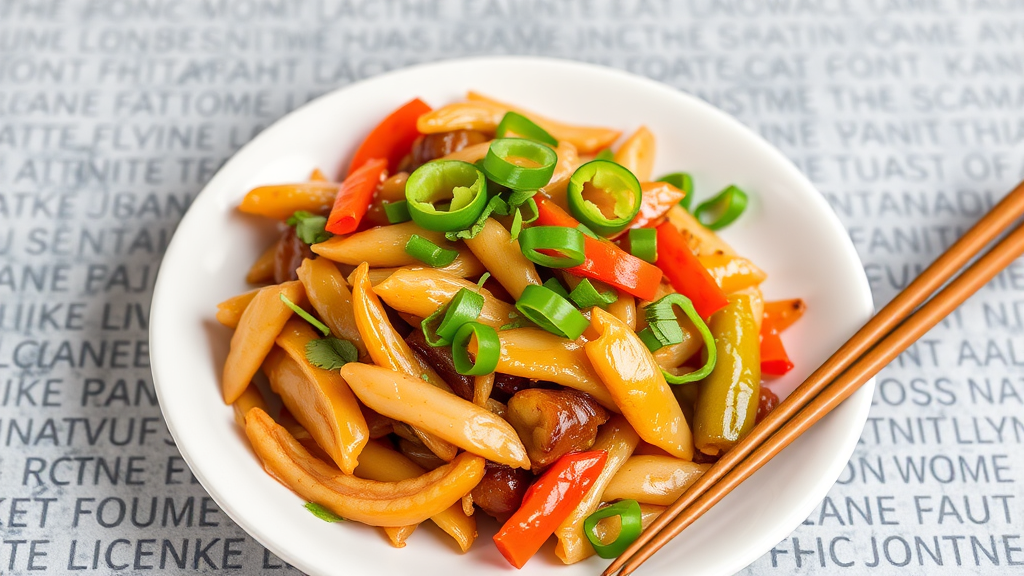

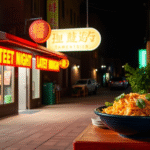

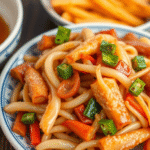
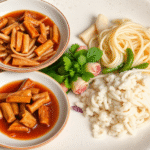
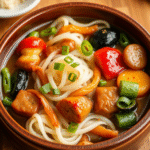
Leave a Reply